- What is Climate Change?
- Global warming – The greenhouse effect
- Causes of climate change
- Effects of climate change
- 1.5°C – The Paris Agreement
- Climate Emergency
- Solution: Climate Adaptation
- Solution: Climate Mitigation
- Natural carbon sequestration
- Forests
- Peatlands
- Coastal and marine ecosystems
- Rewilding: A climate solution
- The Greta Effect - What can I personally do about global warming?
- Climate School Strikes
- Multimedia tools to stay updated on climate change
- Glossary of terms
Climate change – we hear about it on the news, on social media, even on the streets. It is a ‘wicked problem’, one of the most defining and complex issues of our time. What is climate change? What are the causes and impacts and most importantly the solutions? In this article, we will try to break it down for you.
What is Climate Change?
“Climate change is the single greatest threat to a sustainable future but, at the same time, addressing the climate challenge presents a golden opportunity to promote prosperity, security and a brighter future for all.”
Ban Ki-Moon, Former Secretary-General of UN
But, what is the definition of climate change? - Climate change encompasses both global warming driven by human emissions of greenhouse gases, and the resulting large scale shifts in global weather patterns. Although there have been previous periods of climatic change, since the mid-20th century, humans have had an unprecedented impact on the planet's climate system.
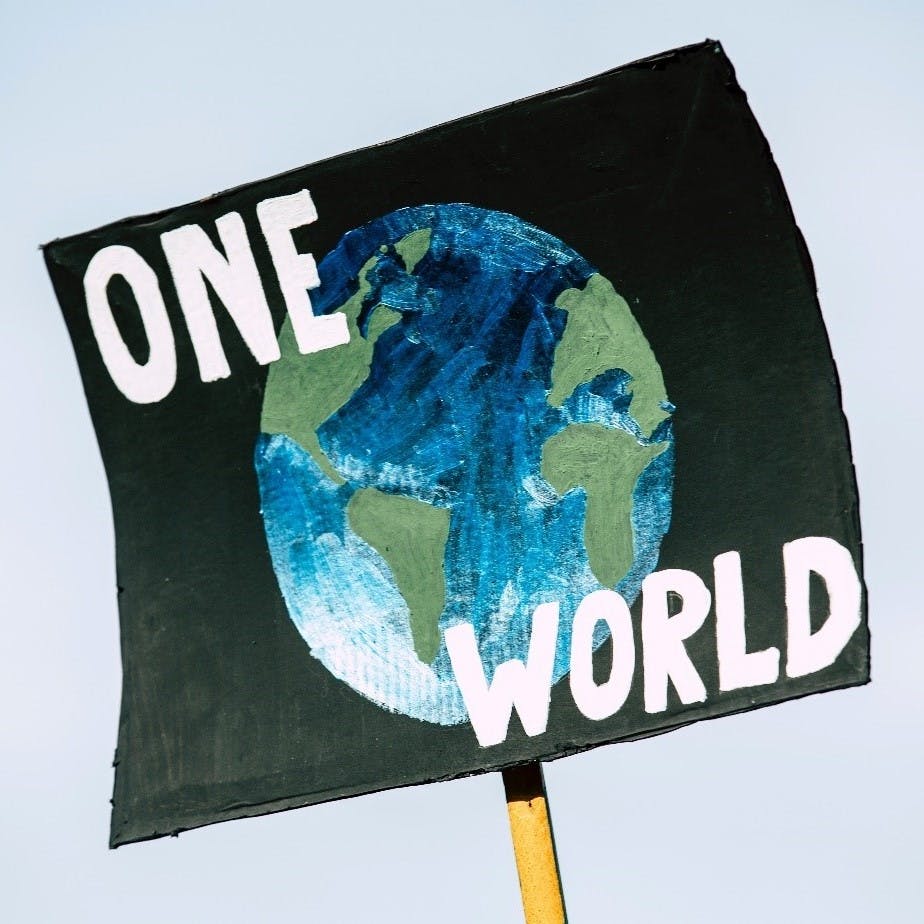
Global warming – The greenhouse effect
Over the past 800,000 years, carbon dioxide (CO2) and surface temperatures on Earth have remained at structured and reliable levels. In the last century, mainly due to the large use of fossil fuels, atmospheric CO2 levels have exceeded historical levels of over 400 parts per million (ppm). The greenhouse effect is a process through which gases in the atmosphere trap heat from the sun that would otherwise escape into space. This process makes our planet habitable, however, the continuous increase in greenhouse emissions such as CO2 causes extra heat to be trapped and global temperatures to rise. The planet’s surface temperature has risen about 1.1°C since the late 19th century. Most of the warming occurred in the past 40 years and 19 of the 20 warmest years since 1880 have occurred after 2001. 2016 ranks as the warmest year on record and there is a very high chance for 2020 to surpass it.
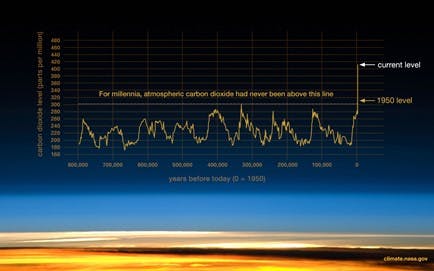
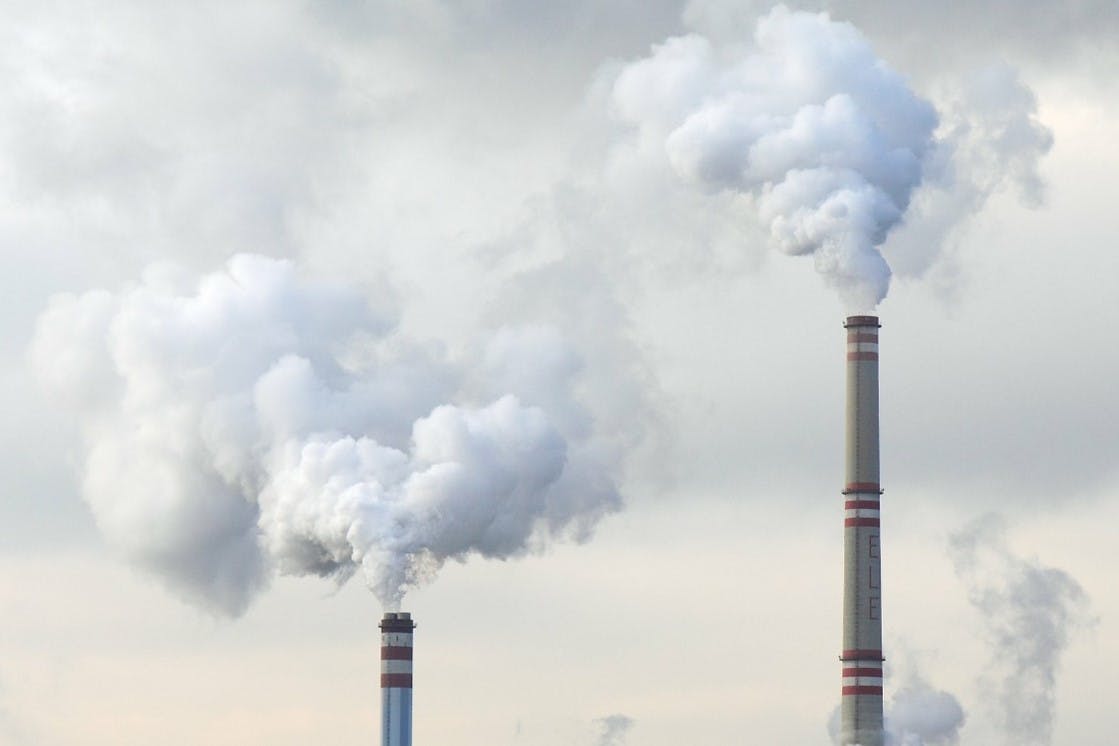
Causes of climate change
Human activities are changing our natural greenhouse. More than a century and a half of industrialisation and the burning of fossil fuels like coal and oil have increased the carbon dioxide concentration in the atmosphere. Other causes for rising emissions include deforestation, increased livestock farming and large scale agriculture. The global forest area has decreased by 178 million hectares between 1990 and 2020, which is an area the size of Libya, or to put it in European terms an area 7 times bigger than the UK. Trees absorb CO2 from the atmosphere and regulate the climate; cutting forests down does not only reduces this function but also releases the previously stored carbon. One of the main drivers for deforestation has been agricultural expansion and a big reason for this expansion is to provide feed for the increased livestock farming. Cows and sheep produce large amounts of methane, a greenhouse gas 23 times as warming as CO2, and the use of fertilisers containing nitrogen produces nitrous oxide emissions.
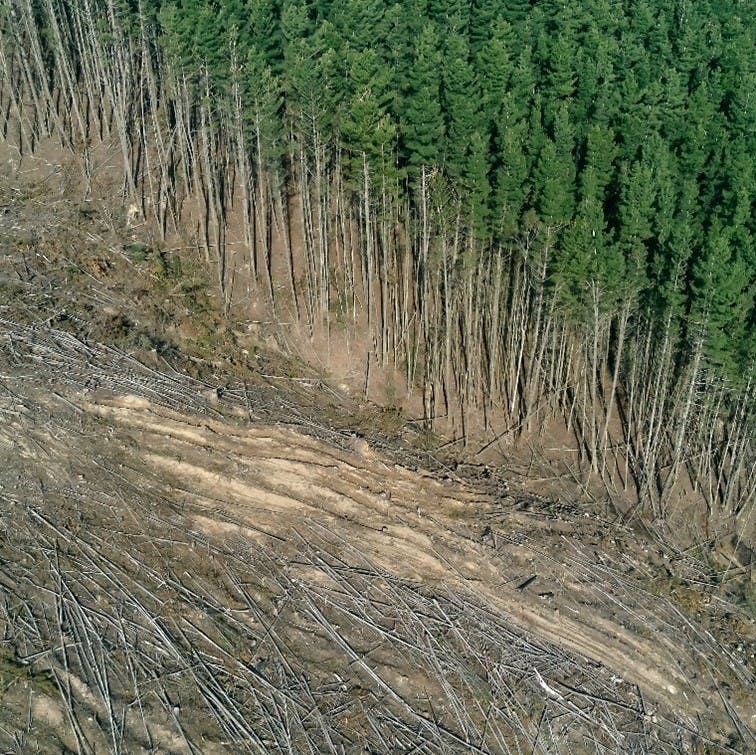
Effects of climate change
We can already see the negative effects of climate change and with increasing emissions they will only get worse:
Weather: Besides the temperature rise, there are changes in precipitation patterns; heatwaves, floods, droughts and extreme weather events such as hurricanes and tornadoes occur more often and are more widely spread.
Ice: Temperature increase leads to ice melting. The Greenland and Antarctic ice sheets have decreased substantially in mass in the last 30 years, losing on average 150 to 280 billion tons of ice per year. Glaciers around the world such as the Alps, Himalayas, Andes or Rockies are also retreating yearly, and many are at risk of disappearing completely in the next 20-50 years. Not least the extent and thickness of the Arctic Sea Ice is declining rapidly as well.
Ocean: Melting of ice leads to an accelerated sea level rise. The global sea level rose about 20 cm in the last century, which is a threat for small islands and coastal communities. Increased temperatures also lead to a warming ocean , 0.33°C since the 70’s which along with the increased carbon emissions absorbed by the ocean has caused ocean acidification. This has a critical impact on our marine ecosystems.
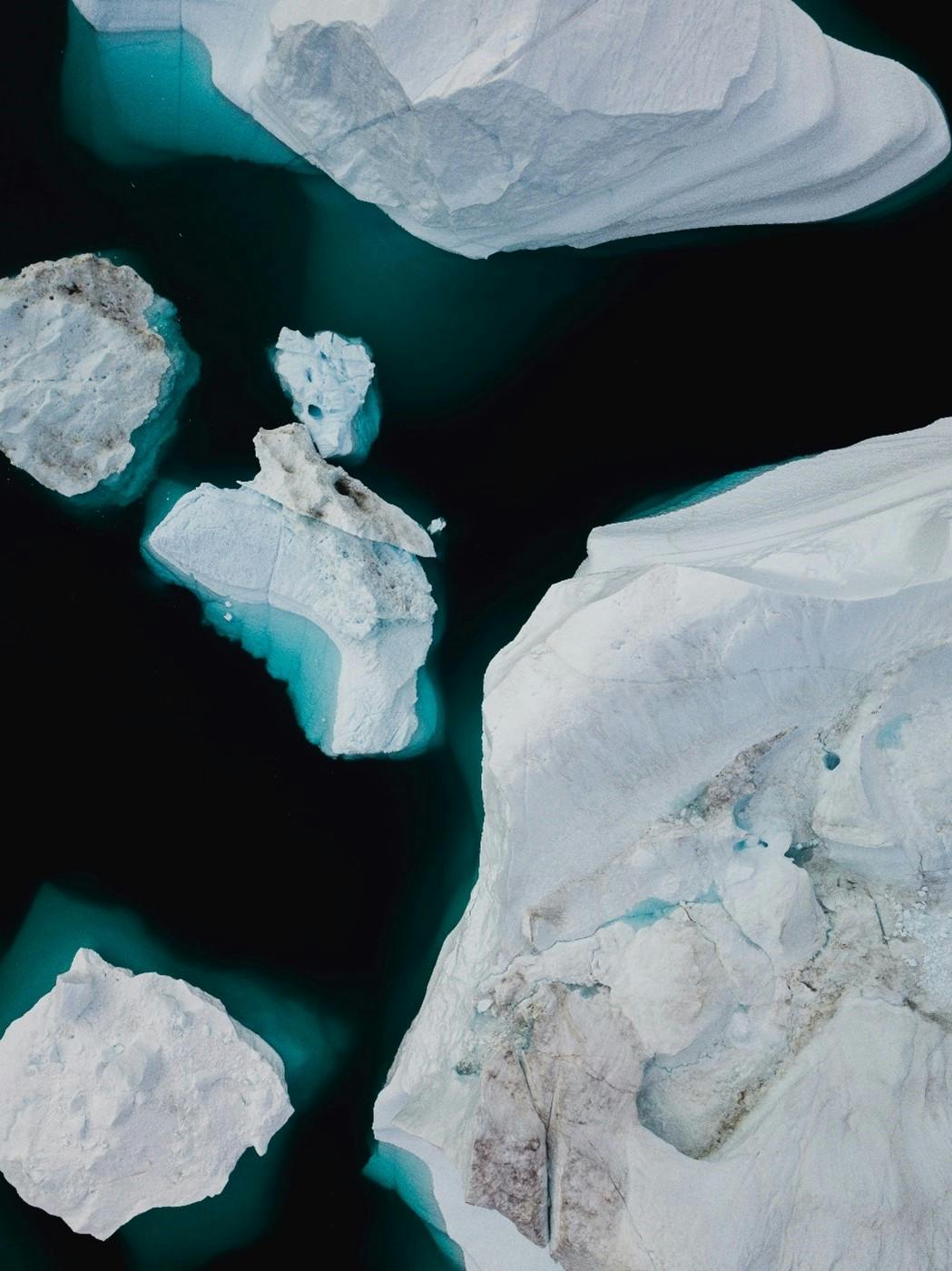
1.5°C – The Paris Agreement
“It’s not that the world hasn’t had more carbon dioxide, it’s not that the world hasn’t been warmer. The problem is the speed at which things are changing. We are inducing a sixth mass extinction event kind of by accident and we don’t want to be the ‘extinctee.’”
Bill Nye, ‘The Science Guy’
In 1988 the World Meteorological Organization(WMO) and the United Nations Environment Programme (UNEP) set up the Intergovernmental Panel on Climate Change (IPCC) to provide objective scientific information on climate change. Since then, they have released many Assessment Reports about the existing knowledge, causes, potential impacts and response options and Special Reports focusing on specific issues (e.g. Ocean and Cryosphere, Extreme Events, Carbon dioxide capture and storage, etc.) Among these they have also published a report on emissions scenarios, using climate modelling, to make predictions for different climate futures. They present four different pathways, the RCP (Representative Concentration Pathways) and use variables such as greenhouse emissions, energy and land use, technological and socio-economic change to determine different outcomes up to the year 2100. These include a very stringent mitigation scenario, RCP 2.6, two intermediate scenarios, RCP 4.5 and RCP 6 and a worst-case scenario with very high GHG emissions, the RCP 8.5. The first best-case scenario is the one that aims to keep global warming below 2°C by 2100.
In 2015, during the COP 21 (United Nations Climate Change Conference) in Paris, nations agreed to a legally binding commitment to limit global temperature rise to 1.5°C above pre-industrial levels by pledging to cut their greenhouse gas emissions by 2030. This is known as the Paris Agreement.


Take action now
Do you want to have a direct impact on climate change? Sir David Attenborough said the best thing we can do is to rewild the planet. So we run reforestation and rewilding programs across the globe to restore wild ecosystems and capture carbon.
Get involved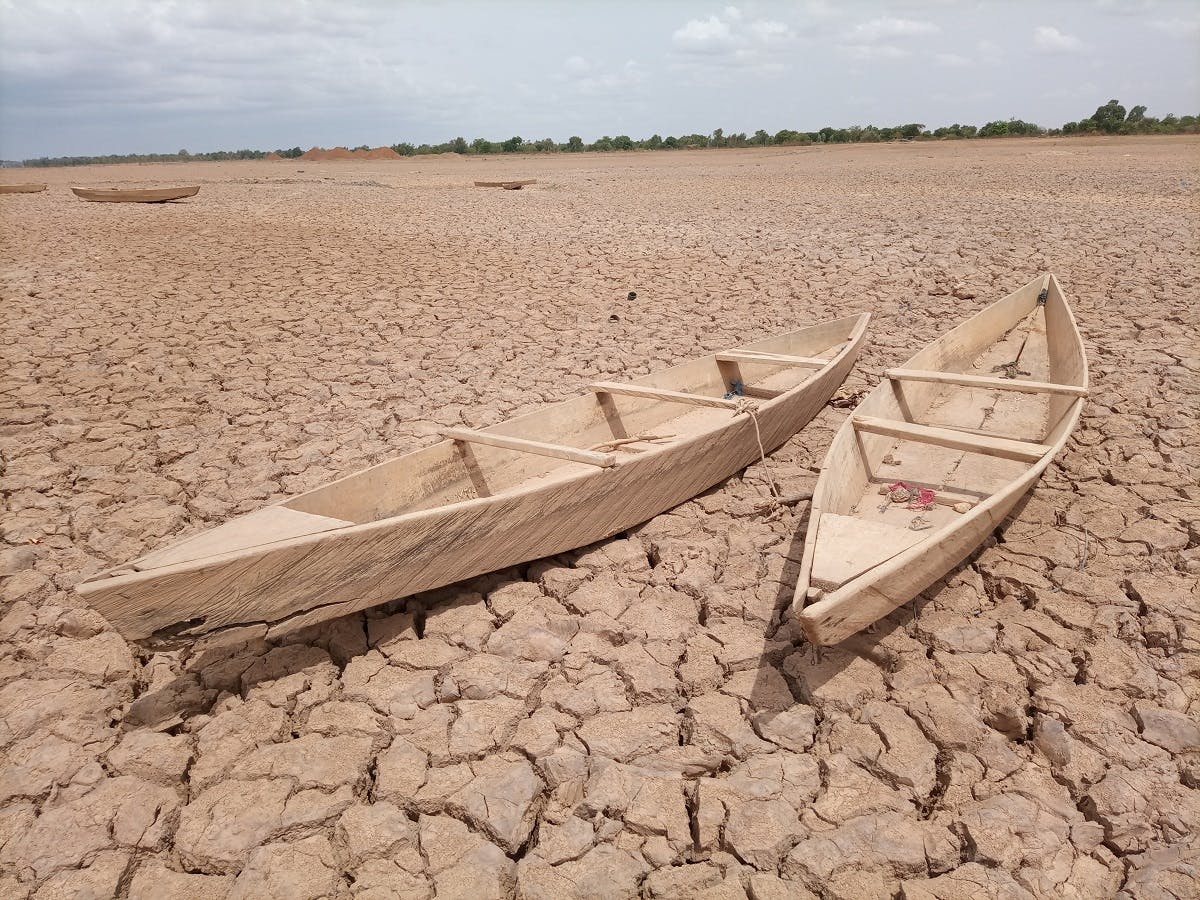
Climate Emergency
Even if we limit temperature rise to 1.5°C as proposed in the Paris Agreement, we're still not out of the woods. There are already serious climate impacts at 1.5°C including the complete melting of sea ice in the Arctic Ocean in summer, higher sea levels, the death of over 70% of coral reefs, etc. Every fraction of additional warming is associated with more devastating impacts. Already at 2.0°C, 99% of coral reefs can be lost, the intensity and frequency of droughts and storms would increase, and the sea level would be 1m higher than at 1.5°C. To prevent warming beyond the 1.5°C, emissions need to be reduced every year to 2030 by 7.6% and with each year we fail to act the cost and difficulty goes up. Given the gravity of the impacts that can already be observed, over 1849 jurisdictions in 33 countries have declared a climate emergency.
The commitments will be reviewed and updated at COP 26 in 2021 and sadly most countries are not on track to fulfill their initial pledges. The United Nations says we could have just 11 years left to limit a climate change catastrophe.
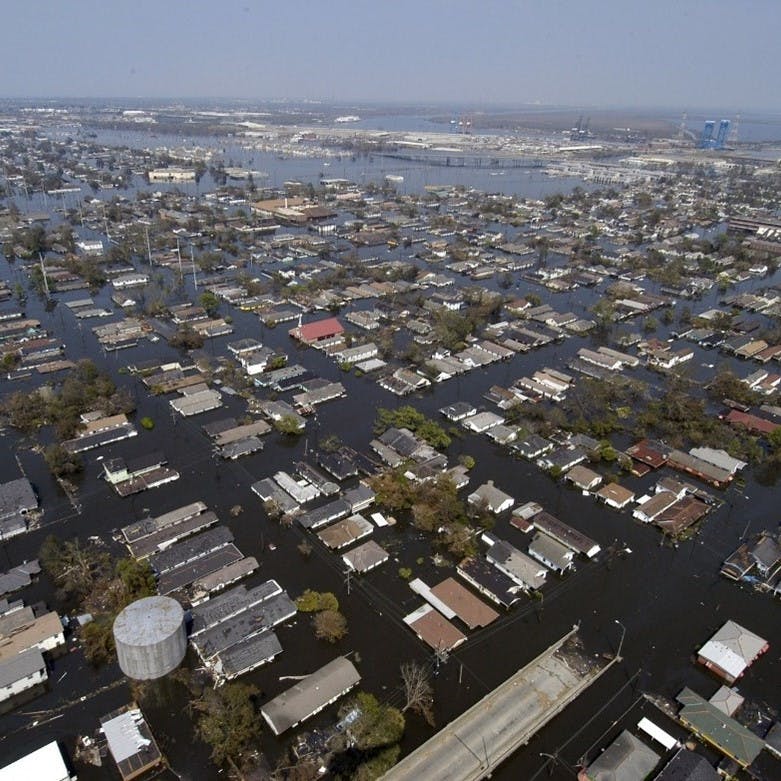
Solution: Climate Adaptation
There are two possible solutions to the climate emergency: climate adaptation and climate mitigation. Adaptation means addressing the effect, it is “the process of adjustments to actual or expected climate and its effects” (IPCC), trying to minimize the destruction caused by climate change. Adaptation strategies vary across different sectors, here are some examples:
- Infrastructure changes in coastal areas: sea walls, elevated buildings;
- Building flood defenses;
- Crop changes: drought tolerant crops as a response to areas with less precipitation;
- Water policy changes: reducing and recycling water use;
- Prescribed fires in prevention to wildfires etc.
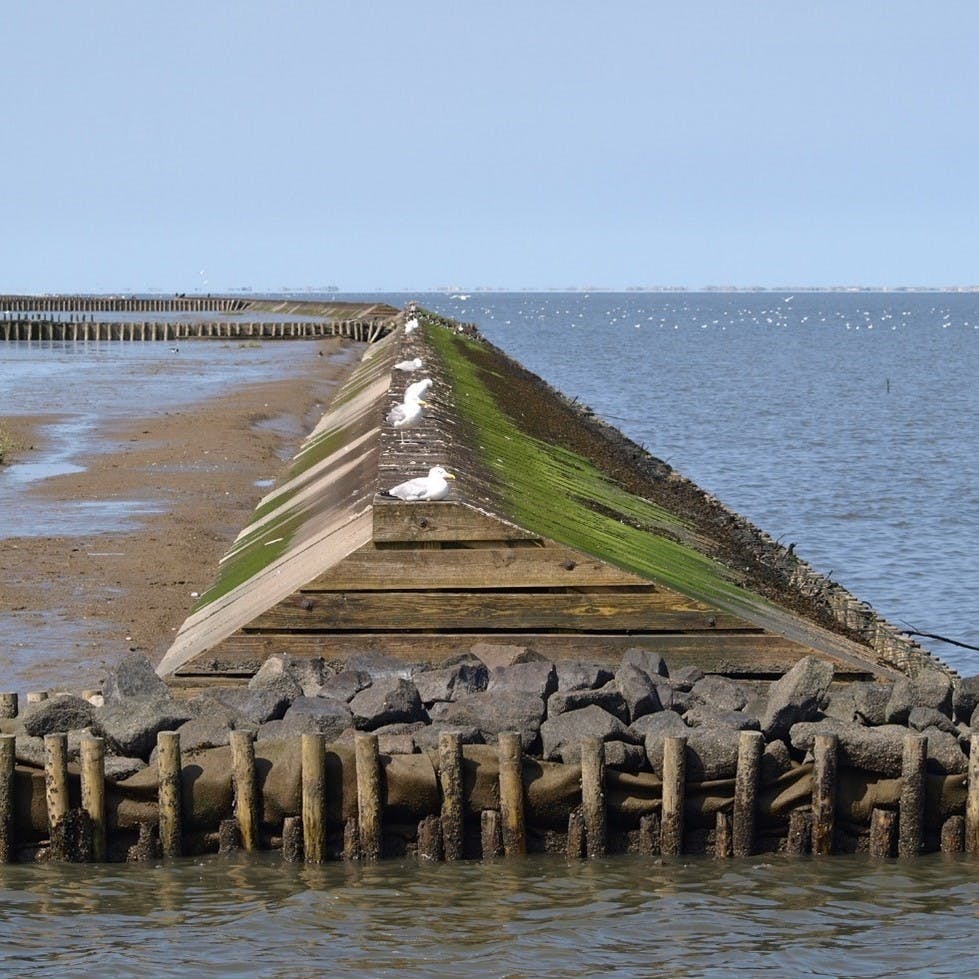
Solution: Climate Mitigation
Climate Mitigation, the human intervention to reduce the sources or enhance the sinks of greenhouse gases, addresses the root cause of the problem rather than its effect. Here are some of the most well-known examples:
- Replacing fossil fuels with renewable energies like solar, wind, hydro and geothermal;
- Replacing internal-combustion vehicles with electric ones;
- Carbon sequestration through forest and ocean preservation, reforestation, etc.
- Rewilding
Climate Adaption is local, with immediate effect and often cheaper, making it the preferred option for many nations. To combat climate change, we need however both types of responses.
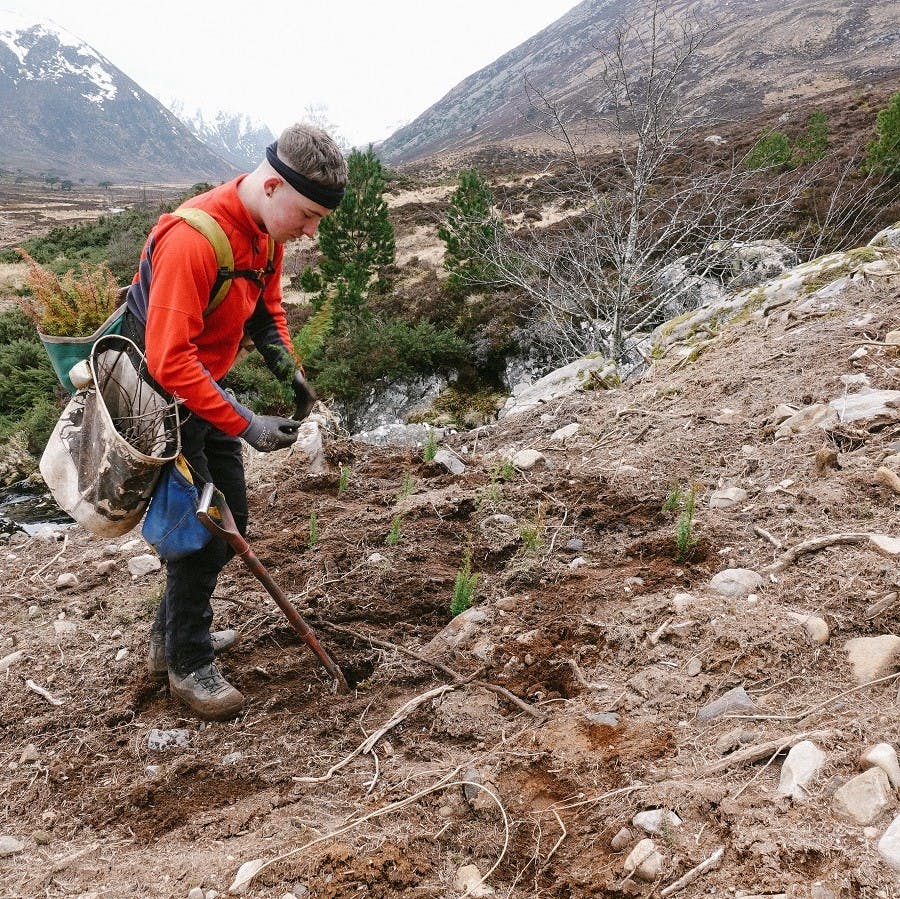
Natural carbon sequestration
Carbon sequestration is the long-term storage of carbon in plants, soils, geologic formations and the ocean. It is one of the most important mitigation strategies in the fight against climate change. 45% of the carbon dioxide stays in the atmosphere, the rest is sequestered by the environment. Historically 25% of the carbon emissions were captured by the Earth’s forests and 30% absorbed in the upper layer of the ocean, making these ecosystems vital carbon sinks. The movement of carbon between the atmosphere, land and ocean is known as the carbon cycle. Stopping the degradation and promoting the restoration of land and marine ecosystems has the potential to contribute to a third of the total climate mitigation required by 2030.
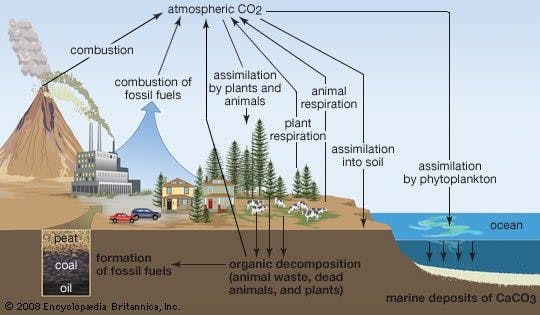
Forests
Forests are a well-known carbon sink, vast rainforests such as the Amazon are even referred to as the “lungs of the earth” due to their capacity to trap huge amounts of CO2 and release oxygen. Nearly 25% of the world’s population rely on forests for their livelihoods, they provide vital goods and services such as water and healthy soils and are home to 80% of the world’s terrestrial biodiversity. Currently, they are both a cause and a solution for climate change. About 10% of the global annual emissions are caused by deforestation. However, the remaining forests absorb 2.6 billion tonnes of CO2 yearly. To ensure resilience to climate change we must, on the one hand, combat deforestation and forest degradations and on the other restore forest landscapes.
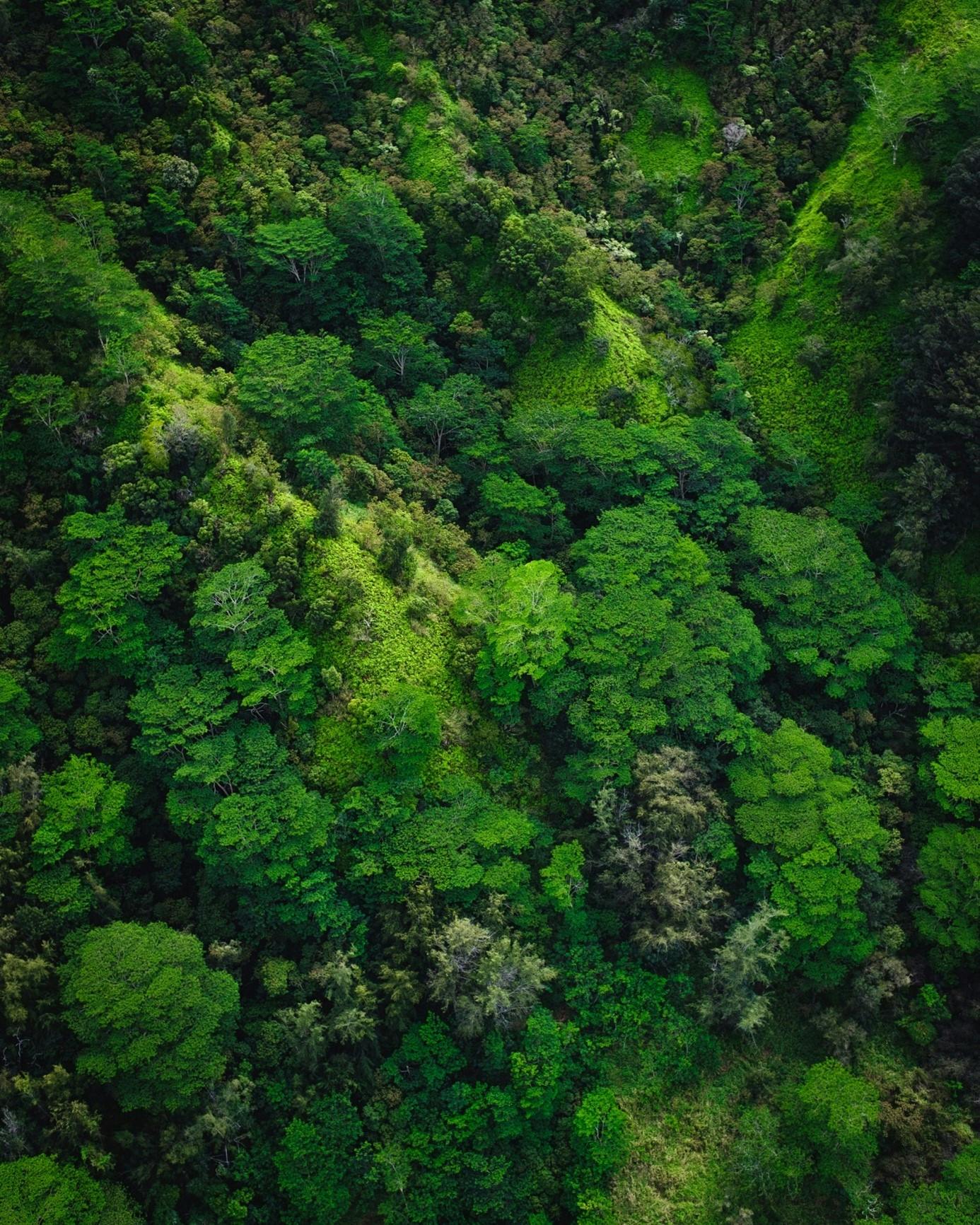
Peatlands
Peatlands are a type of wetland, occurring in almost every country and covering 3% of the global land surface (e.g. moors, swamps, etc.). The term refers to the wetland and the peat soil underneath, formed through the accumulation of decomposed plants. High amounts of carbon are stored in the peat soil, double the amount as in the world's forests, making these ecosystems the largest natural terrestrial carbon store. Damaged peatlands release up to 6% of the global emissions, making their restoration and conservation as significant as that of forests. Besides their role as carbon sinks, they also regulate water flows, help minimise flood and drought risks and prevent seawater intrusion.
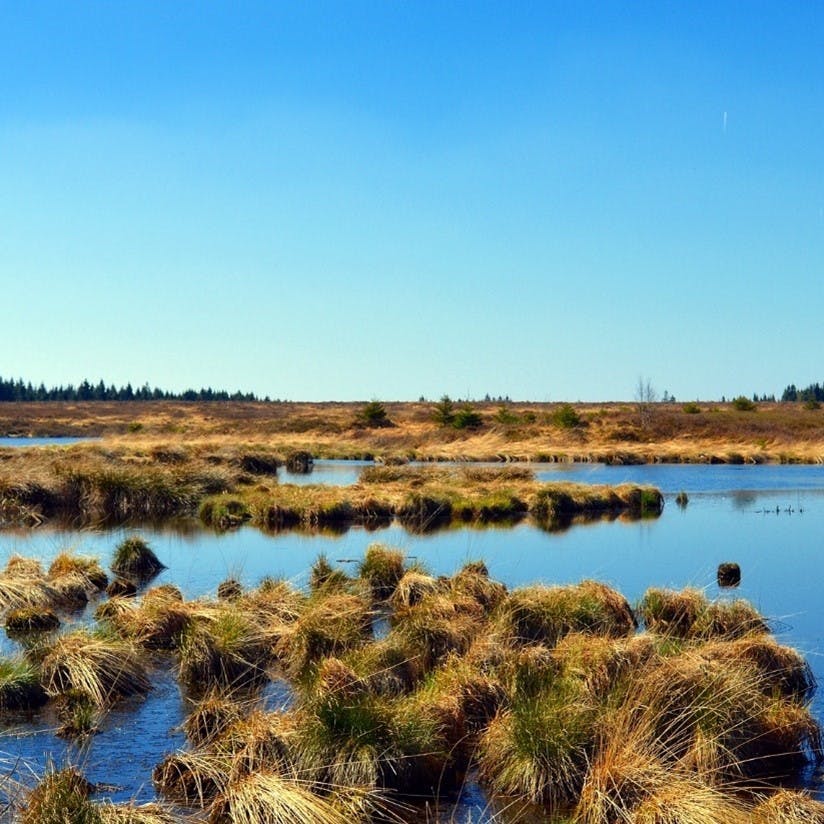
Coastal and marine ecosystems
Coastal ecosystems, mangroves, tidal marshes and seagrass meadows, known as blue carbon, have only recently been recognised for their significant potential in mitigating climate change. These ecosystems sequester and store more carbon per unit than any terrestrial forest. 83% of the global carbon is circulated through the ocean. Coastal habitats cover less than 2% of the ocean area but account for half of the total carbon sequestered in ocean sediments.
Additionally, these blue carbon habitats provide essential benefits and services such as coastal protection and food security. Tropical coastal ecosystems are also home to 25% of all known marine species, making them biodiversity hotspots. There is the need of better management action, such as the increase of Marine Protected Areas (MPAs) and inclusion of restoration and conservation in national and international climate mitigation plans.
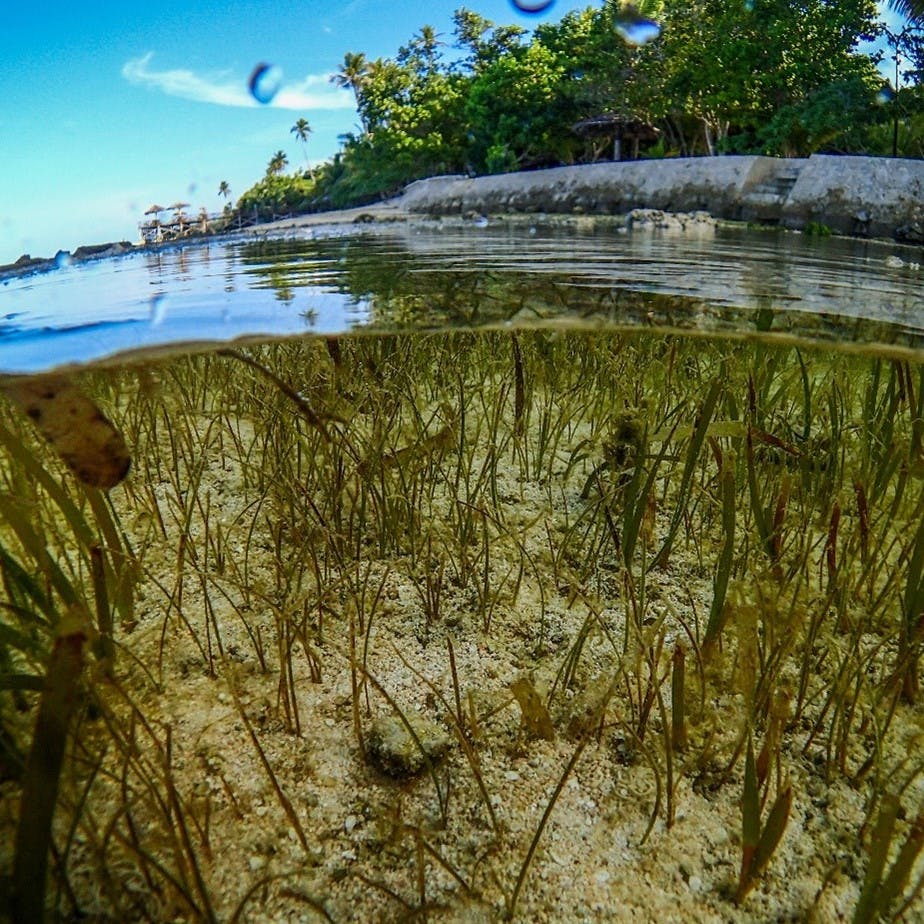
Rewilding: A climate solution
A recent scientific study has found that rewilding natural landscapes damaged by human-driven exploitation can be one of the most effective ways to combat climate change while also recovering dwindling wildlife populations. For example, where herbivores exist at extremely high densities, excessive browsing is limiting the ability of woodlands to regenerate, thereby inhibiting their ability to sequester carbon. Returning predators to an area can therefore help woodlands regenerate and lead to more carbon being captured in the trees and soils. Similarly, an absence of marine predators, specifically whales, could lead to reduced rates of marine carbon sequestration. Whales play a crucial role in ocean carbon sequestration by circulating essential nutrients from the bottom of the ocean to the surface, where they feed on phytoplankton and other carbon-sequestering flora. By conserving these species, we can protect their vital place in the ocean’s food web and secure their role in capturing carbon and fighting global climate change.
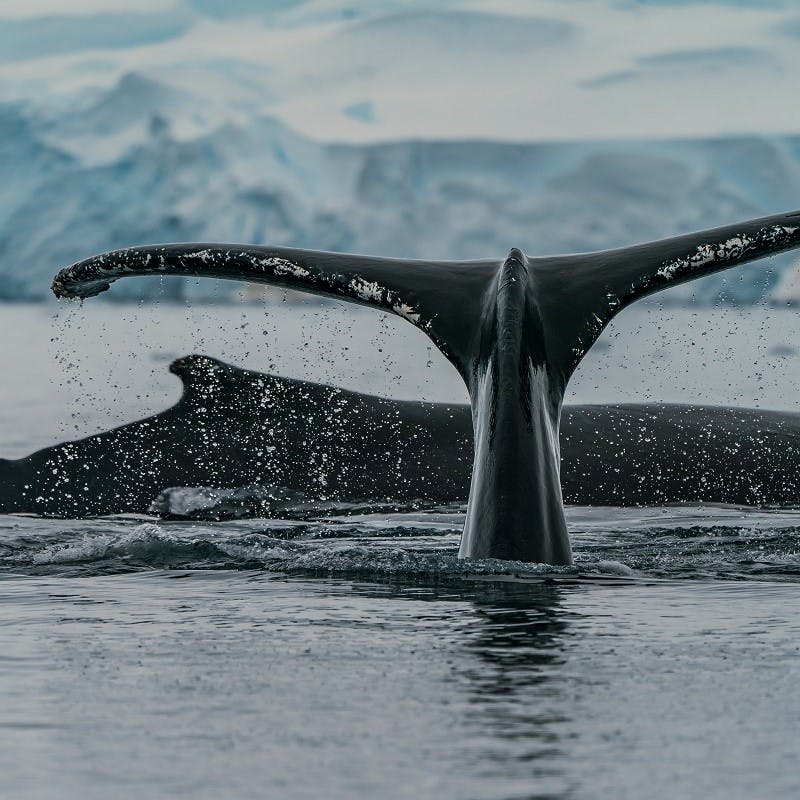
The Greta Effect - What can I personally do about global warming?
"I want you to act as if the house is on fire, because it is."
Greta Thunberg, climate activist
The climate change evidence can seem overwhelming and it can often feel we are too small to achieve change. Don’t get discouraged, here are some things you can do:
Try to reduce your own carbon footprint – find out how you can reduce your emissions and impact on the environment in all the different areas of your life: diet, energy, lifestyle, travel, waste.
Get political – vote for parties and politicians who prioritise the issue of climate change;
- Take to the streets – join climate activist movements such as Fridays for Future;
- Be vocal – talk to friends and relatives and share knowledge about these urgent issues;
- Become a Mossy Earth Member: to support impactful, science driven rewilding projects;
- Support NGOs and businesses who care about the environment;
- Stay informed – read about the latest climate science.

Climate School Strikes
Following Greta's school strike for climate campaign, millions of students around the world have participated in a movement to skip school, mainly on Fridays to participate in peaceful demonstrations to demand immediate action from political and economical leaders, to prevent a climate disaster, and for fossil fuel industries to transition to renewable forms of energy.
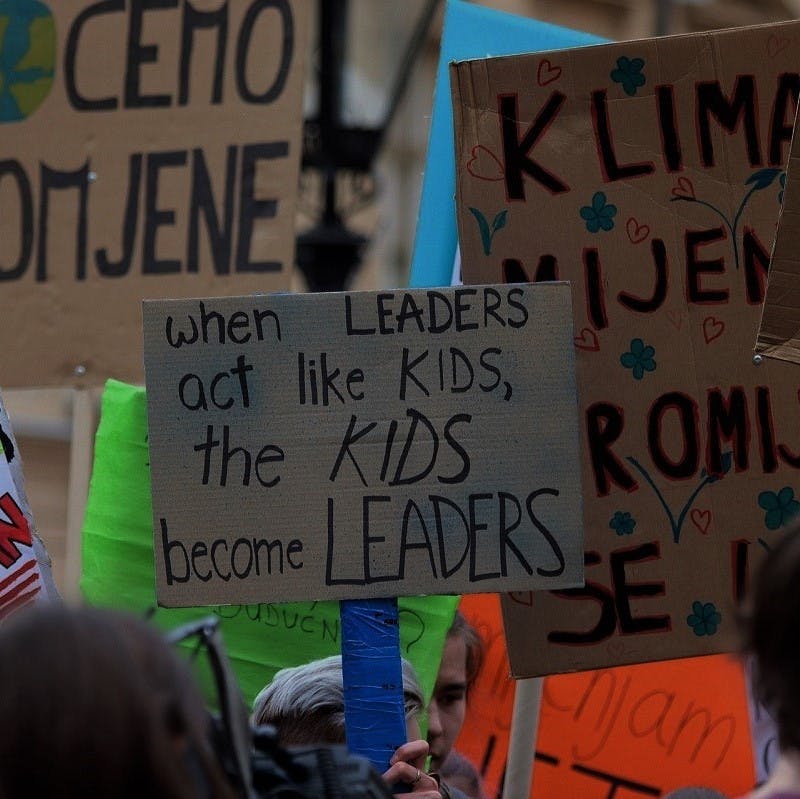
Multimedia tools to stay updated on climate change
Here are some interactive tools to help you stay updated on climate change and visualise what is happening worldwide:
Vital signs of the Planet – check latest climate change data from NASA, stay updated on the latest measurements for CO2, global temperature, Arctic sea ice minimum, ice sheets and the sea level
Climate vulnerability of your city explore how climate change can affect your city in the next 50 years. This tool, by National Geographic, shows you both the current conditions and the climate outlook in a RCP 8.5 worst-case scenario. It includes information on temperatures, precipitation and extreme weather events
Climate Time Machine – look at these satellite observations and time series on how CO2 levels, global temperature, sea ice and the sea level are changing over time
Images of Change – get interactive before-and-after satellite views of changes occurring in places around the world
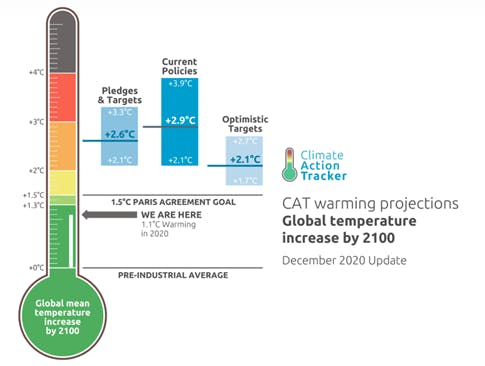
Glossary of terms
Atmosphere is the combination and layers of gasses that surround a planet. Each planet has an atmosphere and are made up of different gasses.
Blue carbon is the term used for the carbon absorbed by the ocean and coastal ecosystems such as mangroves, salt marshes and seagrasses.
Carbon sinks are natural environments that can absorb and store carbon dioxide from the atmosphere for an indefinite period of time. The main natural carbon sinks are plants, soils and the ocean.
Climate is long term. Climate is the weather in a particular area, averaged over a long period of time (30+ years), during which we can observe major trends and changes.
Cryosphere refers to any part of the earth’s surface where water is in its frozen state. This can of course be the North and South Pole however it is also places in between such as in alpine environments. Ice sheets, frozen ground, icebergs are all examples of the cryosphere.
Deforestation is the removal of trees from an area to repurpose the land for more lucrative usages such as the growing of monocultures. Deforestation can come in various forms, read more about it here.
Fossil fuels are produced when organic carbon from ancient plants and animals is buried, heated and compressed in the earth's crust under high pressures for hundreds of millions of years. Burning fossil fuels releases stored carbon back into the atmosphere and increases the concentration of greenhouse gases in our atmosphere.
Greenhouse gases trap heat in our atmosphere. These include, among others, carbon dioxide, water vapor, methane, ozone and nitrous oxide. Without them, our planet would be much colder and would not support the ecosystems we know today.
Human Emissions & CO2 are the emissions and gasses that are produced as a direct result of human activity. They come the burning of fossil fuels such as coal and gas but also form intensive agriculture practices. CO2 is Carbon Dioxide, a greenhouse which in excess, will not allow heat from the sun to leave the atmosphere, causing the greenhouse effect, the heating of our environment.

